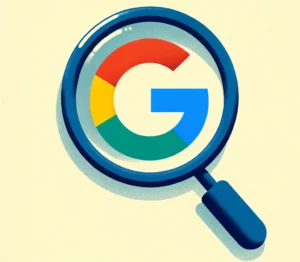Ever feel like the Internet of Things (IoT) is a jigsaw puzzle with too many pieces? You’re not alone in the struggle to understand how everything fits together.
This post will guide you through Microsoft’s pivotal role in crafting the IoT landscape, delivering insights you can apply immediately.
Quick Takeaways:
- Utilize Azure IoT Hub for secure, scalable device management, enabling seamless device-to-cloud and cloud-to-device communication for your business operations.
- Explore cutting-edge IoT security with Azure Sphere, offering comprehensive protection from chip to cloud and ensuring your IoT devices are safeguarded against cyber threats.
- Leverage Microsoft’s resources like the Azure IoT Developer Center and Microsoft Learn to arm your IoT projects with robust tools, in-depth learning, and hands-on guidance.
How Is Microsoft Paving the Way for IoT Integration?
Microsoft is like a craftsman, shaping the future of the Internet of Things (IoT) with the tools and services it provides. Azure, Microsoft’s cloud platform, is a treasure trove of IoT services that act as the fundamental building blocks for integrating devices and applications with ease and reliability. At the heart of these services lies the Azure IoT Hub, a managed service that’s a maestro in letting devices securely connect and be managed at scale.
By using the Azure IoT Hub, businesses can say goodbye to the sleepless nights worrying about connectivity issues and instead enjoy a smooth, secure highway where millions of IoT devices can travel without bumps. It kind of feels like having a universal remote that not only connects all your devices with a single click but also makes sure each one behaves. Plus, the Hub also comes with features like device-to-cloud telemetry data, enabling devices to send data to the cloud, and the equally crucial cloud-to-device commands.
But there’s more where that came from! Azure IoT Hub integrates with other Azure services, creating a much bigger canvas for seamless interaction. Businesses can leverage data collected to power analytics, process streams in real-time, and even tap into artificial intelligence (AI) and machine learning (ML) to create more predictive and proactive operations.
What Innovations Has Microsoft Introduced to IoT?
Microsoft doesn’t just stop at integration. It also gets its hands dirty with some groundbreaking IoT innovations. A prime example is Azure Sphere, Microsoft’s solution for securing IoT devices from chip to cloud. This comprehensive security measure is pioneering, as it addresses one of the biggest challenges in the IoT sphere — security. Azure Sphere encompasses a secured MCUs (microcontroller units), an OS that’s built on a custom Linux kernel, and a cloud-based security service. It’s like an armored caravan safeguarding all aspects of IoT devices against the ambush of cyber threats.
Among other innovations, Microsoft has also endeavored with Azure Digital Twins, a platform enabling users to create a digital representation of real-world things, places, business processes, and people. This platform provides the ability to model the interactions and relationships between the IoT devices and other digital entities, essentially allowing you to understand and simulate the performance and dynamics of IoT environments before you commit real-world resources.
How Can You Use Microsoft’s IoT Technologies for Your Business?
So, you’re wondering how to make Microsoft’s IoT portfolio work for your business? It’s simpler than you might think, and it could be a game-changer in boosting your business efficiency, cutting costs, and making smarter decisions.
Let’s get practical—imagine you’re running a manufacturing business. With the Azure IoT Suite, you can monitor production lines in real time. You would know instantly if a machine starts acting up, which means you can nip problems in the bud before they cause serious downtime. Now, apply these capabilities to predictive maintenance, and voilà, you’re avoiding expensive repairs and increasing the longevity of your equipment.
Or, picture a retail business harnessing the power of IoT for inventory management. Using Azure IoT solutions, you can keep an eagle eye on your stock levels and automatically reorder products just as they’re about to run out. This not only saves you time but also ensures you don’t lose customers due to out-of-stock situations.
Here’s a nugget of advice that’s often glossed over but can be pure gold: Integrate Azure IoT with your customer service. IoT can help you understand how customers use your products, which can lead to more tailored services and improve customer satisfaction. And with tools like Azure IoT Central, it becomes a piece of cake to manage your IoT applications and keep them humming along without needing a team of rocket scientists.
Remember, IoT is not just about connecting things; it’s also about the insights gained from those connections. So go on, take these insights and think outside the box. Your business will thank you for it.
Keep an eye out for more ways to leverage IoT in specific sectors and don’t miss out on future tips and insights. Your journey with IoT is just getting started, and there’s so much more to explore!
What Resources Does Microsoft Offer to IoT Developers?
When diving into the world of Internet of Things (IoT), you’ll soon find out that it’s a bit like heading into a jungle. There are myriad devices, protocols, and coding standards. Thankfully, Microsoft is like a seasoned guide offering you a helping hand with a treasure trove of resources tailored for IoT developers.
First off, let’s talk about Azure IoT Developer Center. It’s a one-stop hub where you can snag all the tools and guidance needed to kickstart your IoT projects. From comprehensive documentation and best practices, to SDKs for various languages like C#, Java, and Python, the Azure IoT Developer Center is truly a developer’s playground.
Here’s a nifty rundown of the cool tools and resources you can find for your IoT adventure:
Azure IoT SDKs: Equip yourself with SDKs available for multiple languages and platforms, which make it super easy to connect your devices to Azure IoT Hub.
IoT Central and IoT Hub: These Azure services make it a cinch to connect, monitor, and manage billions of IoT devices.
Azure IoT Edge: Enables you to run cloud intelligence directly on IoT devices, even offline.
Microsoft Learn: Now, this is where the magic happens! It’s chock-full of modules and learning paths that are tailor-made for IoT specialists, offering interactive learning to up your game.
IoT School: An online learning platform offering video tutorials and deep-dive sessions that’s perfect for those visual learners among us.
IoT Samples and Guides: Helpful code samples and walkthrough guides let you see IoT implementation in action, giving you the real nitty-gritty on how to get your devices chatting seamlessly.
Remember, what sets some of these resources apart is their richness in hands-on, practical examples. Getting your hands dirty with actual code alongside guided learning is what helps the concepts stick.
How Does Microsoft Ensure Security and Privacy in IoT?
Let’s face it, security and privacy issues can keep you up at night, especially when it comes to the interconnected world of IoT. The thought of some hacker turning your smart coffee machine into a zombie in a botnet is no one’s cup of tea.
Microsoft knows this all too well and doesn’t play light when it comes to securing the IoT space. Here’s what they’ve got up their sleeve:
Azure Security Center for IoT: This comprehensive security solution works like a dream, providing unified security management and advanced threat protection across your IoT projects.
Azure Sphere: Picture this as a superhero combo of chip-design, an uber-secure Linux-based OS, and cloud security services that guard every Azure Sphere–enabled device. It’s the Fort Knox for IoT security.
Security Best Practices: Microsoft doesn’t just throw you tools and wish you luck. They offer thorough guidance and best practices on securing your IoT environment from device to cloud.
Privacy Features: It all goes hand in hand; privacy is a top priority. We’re talking about features that support compliance with global standards, and transparency tools that let you manage and control your data like a boss.
One unique aspect that’s often overlooked is Microsoft’s commitment to the security research community. They actively encourage and reward cybersecurity experts to find and report security vulnerabilities. This collaboration enhances the safety of their ecosystem, demonstrating that security isn’t just a one-company show but a community effort.
Both Azure Security Center for IoT and Azure Sphere update automatically, so security stays on point without you breaking a sweat. It’s this sort of attention to detail that can offer some serious peace of mind.
By striking a delicate balance between offering advanced security features and making them accessible and manageable, Microsoft has carved a niche for itself within the IoT community as a haven for businesses and developers who want to ensure their IoT solutions are not just smart but also secure.


